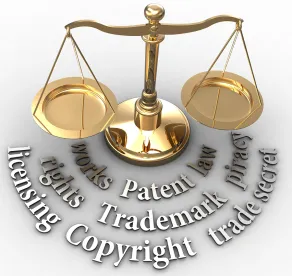On July 17, 2017, the United States Court of Appeals for the Federal Circuit reversed, in a precedential opinion in Millennium Pharmaceuticals, Inc. v. Sandoz, Inc., No. 2015-2066 (Fed. Cir. July 17, 2017), a district court ruling that claims of a patent directed to the Velcade® cancer treatment drug compound were invalid as obvious. The Court held that the District of Delaware clearly erred by finding U.S. Patent No. 6,713,446 (the ‘446 patent) prima facie obvious to one of skill in the art, and by misapplying the secondary indicia of unexpected success and long-unmet need.
The ‘446 patent and District Court Litigation
Appellant, Millennium Pharmaceuticals, is the exclusive licensee of the ‘446 patent, which describes the active ingredient in Velcade®, D-mannitol N-(2-pyrazine)carbonyl-L-phenylalanine-L-leucine boronate, an ester of bortezomib and D-mannitol. The ‘446 patent claims this boronate ester, a method of preparing the ester via lyophilization (i.e., freeze-drying), and a reconstitution of the ester with a pharmaceutically acceptable carrier. Before the invention claimed by the ‘446 patent, bortezomib, disclosed by prior art U.S. Patent No. 5,780,454 (the ‘454 patent), was known for its anticancer efficacy. Despite years of extensive formulations research, the ‘454 patent inventors had been unable to create a stable formulation of bortezomib that also had acceptable solubility in the bloodstream to treat patients — that is, until the ‘446 patent inventor lyophilized bortezomib with a known bulking agent, mannitol, yielding a formulation with the desired stability and solubility.
The resulting drug, Velcade®, quickly received FDA approval and became a blockbuster treatment for multiple myeloma. Subsequently, Sandoz and other generic drug makers submitted ANDAs for generic versions of Velcade®. Millennium, in turn, asserted the ‘446 patent against generic ANDA filers, who stipulated to infringement but asserted that the ‘446 patent was invalid as obvious. The District of Delaware agreed, finding the asserted claims obvious, and Millennium appealed.
Federal Circuit Reverses the District Court’s Obviousness Rulings
The Federal Circuit first analyzed the district court’s obviousness determination by framing the relevant question as whether one of ordinary skill, seeking to remedy the known instability and insolubility of the lead compound, bortezomib, would have found it obvious to produce the claimed, and previously unknown, bortezomib ester. Referring to the Federal Circuit’s post-KSR chemical obviousness jurisprudence, the Court considered “whether the prior art would have supplied one of ordinary skill in the art with a reason or motivation to modify a lead compound to make the claimed compound with a reasonable expectation of success.” Id. at 10 (quoting Otsuka Pharm. Co., Ltd. v. Sandoz, Inc., 678 F.3d 1280, 1292 (Fed. Cir. 2012)).
The Court agreed with appellee, Sandoz, that: (1) lyophilization was generally known in formulating pharmaceuticals, (2) bulking agents were known for use in the process, and (3) mannitol was a known bulking agent. But the use of a known process did not render the claimed ester obvious because the prior art did not teach or suggest that lyophilization with mannitol would produce a new chemical compound, provide a reason to make that specific new compound, or indicate that the new compound would solve the bortezomib formulation problems.
To the contrary, the Court found that the prior art taught away from the claimed lyophilization process because one of ordinary skill in the art would have been concerned about disturbing bortezomib’s desired chemical properties because one of skill in the art would have known that the ester blocks binding of a portion of the bortezomib molecule. They would not, however, necessarily have known that the resulting novel ester’s rapid disassociation in the bloodstream would prevent the blocking ester from inhibiting binding efficacy.
The Court next disagreed with the district court’s finding that the claimed ester was inherently obvious, concluding that the district court improperly relied on hindsight by considering the inventor’s path of invention, rather than objectively considering the path that one of skill in the art would have followed, based on the prior art. Writing for the panel, Judge Newman explained that it does not matter that the inventor’s specific experiment may “inevitably” produce the claimed ester because appellants introduced no evidence that one of skill in the art would have expected and intended that the lyophilization would have produced the specific claimed ester or that the resulting ester would have had the long desired properties.
Finally, the Court disagreed with the lower court’s consideration of the objective indicia of obviousness in the form of unexpected results and long-felt but unmet need. According to the panel, the district court erred by comparing the Velcade® product with a different bortezomib ester that was implied, but not specifically disclosed, prepared or tested, by the prior art ‘454 patent. Instead, the Federal Circuit held that the district court should have compared the Velcade® ester with the closest prior art actually known, i.e. bortezomib. The court noted that when compared with the correct prior art, the ‘446 patent’s bortezomib ester demonstrated unexpectedly superior stability and solubility, thus indicating unobvious superiority.
The Federal Circuit also held that the district court erred in evaluating the long-felt but unmet need for the invention, a particularly important consideration for new drug formulations. The court found that the district court improperly discounted the undisputed long-felt need for a multiple myeloma treatment by attributing Velcade®’s success to the prior art bortezomib alone. Judge Newman explained that this finding was clear error because bortezomib alone was never a commercially-viable product and was denied FDA approval due to its instability.
The Federal Circuit’s decision is a complete reversal of the district court’s holding that the asserted claims of the ‘446 patent claims would have been obvious. In particular, the Court indicated its unwillingness to use hindsight to find a novel chemical compound obvious or inherently obvious where it was the result of a process known in the art, but where neither the novel compound nor its properties were known to, or expected by, one of skill in the art at the time of invention.





 />i
/>i
